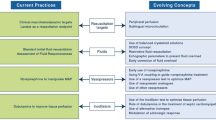Abstract
The influence of ceftiofur on immune responses has been suggested by results of in vitro studies. This effect was studied using a murine model that measured mortality and early cytokine responses after challenge with endotoxin. To investigate the treatment of endotoxic mice with ceftiofur, mice were pretreated with ceftiofur at different times before and after challenge with a lethal dose of 30 mg/kg lipopolysaccharide (LPS). We found that 20 mg/kg ceftiofur had a significant protective effect and reduced the mortality of mice at early stages. To further understand the mechanism of action of ceftiofur, we examined plasma cytokine levels. Mice treated with LPS alone showed markedly increased plasma levels of TNF-α, IL-1β, IL-6 and IL-10, whereas mice pretreated with 20 mg/kg ceftiofur showed significantly decreased plasma levels of TNF-α, IL-1β and IL-6, but increased plasma levels of IL-10. These results support the idea that ceftiofur has a beneficial effect on LPS-induced endotoxemia caused by LPS through its modulation of cytokine levels. This confirms the effect of ceftiofur for the treatment of endotoxemia, which is caused by a Gram-negative bacterial infection.



Similar content being viewed by others
References
Ahonkhai, V. I., C. E. Cherubin, and M. A. Shulman. 1982. In vitro activity of cefodizime (HR-221). Antimicrob Agents Chemother. 22(4):715–718.
Bergeron, Y., N. Ouellet, A. M. Deslauriers, M. Simard, M. Olivier, and M. G. Bergeron. 1998. Reduction by cefodizime of pulmonary inflammatory response induced by heat-killed Streptococcus pneumoniae in mice. Antimicrob. Agents Chemother. 42(10):2527–2533.
Meloni, F., P. Ballabio, L. Bianchi, F. A. Grassi, and G. G. Gialdroni Grassi. 1995. Cefodizime modulates in vitro tumor necrosis factor-alpha, interleukin-6 and interleukin-8 release from human peripheral monocytes. Chemotherapy. 41(4):289–295.
Rotimi, V. O., T. L. Verghese, N. Al-Sweih, F. B. Khodakhast, and K. Ahmed. 2000. Influence of five antianaerobic antibiotics on endotoxin liberation by gram-negative anaerobes. Chemother. 12(1):40–47.
Labro, M. T.. 1998. Anti-inflammatory activity of macrolides: a new therapeutic potential. J. Antimicrob. Chemother. 41:37–46. doi:10.1093/jac/41.suppl_2.37.
Culic, O., V. Erakovic, and M. J. Parnham. 2001. Anti-inflammatory effects of macrolide antibiotics. Eur. J. Pharmacol. 429:209–297. doi:10.1016/S0014-2999(01)01321-8.
Tamaoki, J.. 2004. The effects of macrolides on inflammatory cells. Chest. 125:41–50. doi:10.1378/chest.125.2_suppl.41S.
Clarke, C. R., S. A. Brown, R. N. Streeter, J. M. Clarke, P. J. Hamlow, J. K. Callahan, V. L. Hubbard, A. K. Speedy, and G. E. Burrows. 1996. Penetration of parenterally administered ceftiofur into sterile vs. Pasteurella haemolytica-infected tissue chambers in cattle. J. Vet. Pharmacol. Ther. 19(5):376–381. doi:10.1111/j.1365-2885.1996.tb00067.x.
Burton, P. J., C. Thornsberry, Y. Y. Cheung, J. L. Watts, and R. J. Yancey. 1996. Interpretive criteria for antimicrobial susceptibility testing of ceftiofur against bacteria associated with swine respiratory disease. J. Vet. Diagn. Invest. 8:464–468.
Ci, X. X., Y. Song, F. Q. Zeng, X. M. Zhang, H. Y. Li, X. R. Wang, J. Q. Cui, and X. M. Deng. 2008. Ceftiofur impairs pro-inflammatory cytokine secretion through the inhibition of the activation of NF-κappaB and MAPK. Biochem. Biophys. Res. Commun. 372:73–77. doi:10.1016/j.bbrc.2008.04.170.
Gallay, P., D. Heumann, D. Le Roy, C. Barras, and M. P. Glauser. 1994. Mode of action of anti-lipopolysaccharide-binding protein antibodies for prevention of endotoxemic shock in mice. Proc. Natl. Acad. Sci. 91:7922–7926.
Richards, C. D., and J. Gauldie. 1995. Role of cytokines in acute-phase response. In: Human Cytokines: Their Role in Disease and Therapy. Blackwell Science, pp. 253–269.
Parrillo, J. E., M. M. Parker, and C. Natanson. 1991. Septic shock in humans. Advances in the understanding of pathogenesis, cardiovascular dysfunction and therapy. Ann. Intern. Med. 113:227–232.
Mahrt, C. R.. 1992. Safety of ceftiofur sodium administered intramuscularly in horses. Am. J. Vet Ret. 53(11):2201–2205.
Howard, M., T. Muchammuel, S. Andrade, and S. Menon. 1993. Interleukin-10 protects mice from lethal endotoxemia. J. Exp Med. 177:1205–1208. doi:10.1084/jem.177.4.1205.
Ozmen, L., M. Pericin, J. Hakimi, R. A. Chizzonite, M. Wysocka, and G. Trinchieri. 1994. Interleukin 12, interferon, and tumor necrosis factor are the key cytokines of the generalized Schwartzmann reaction. J. Exp. Med. 180:907–915. doi:10.1084/jem.180.3.907.
Tracey, K. J., Y. Fong, D. G. Hesse, K. R. Manogue, A. T. Lee, and G. C. Kuo. 1987. Anti-cachectin/TNF-α monoclonal antibodies prevent septic shock during lethal bacteraemia. Nature. 330:662–664. doi:10.1038/330662a0.
Beutler, B., I. W. Millsark, and A. C. Cerami. 1985. Passive immunization against cachectin/tumor necrosis factor protects mice from lethal effects of endotoxin. Science. 229:869–871. doi:10.1126/science.3895437.
Lynn, W. A., and J. Cohen. 1995. Adjunctive therapy for septic shock: a review of experimental approaches. Clin. Infect. Dis. 20:143–158.
Karzai, W., and K. Reinhart. 1997. Immune modulation and sepsis. Int. J. Clin. Pract. 51:232–237.
Acknowledgments
This work was supported by a grant from the National Natural Science Foundation of China (No. 30671586).
Author information
Authors and Affiliations
Corresponding author
Rights and permissions
About this article
Cite this article
Ci, X., Li, H., Song, Y. et al. Ceftiofur Regulates LPS-Induced Production of Cytokines and Improves LPS-Induced Survival Rate in Mice. Inflammation 31, 422–427 (2008). https://doi.org/10.1007/s10753-008-9094-y
Published:
Issue Date:
DOI: https://doi.org/10.1007/s10753-008-9094-y




